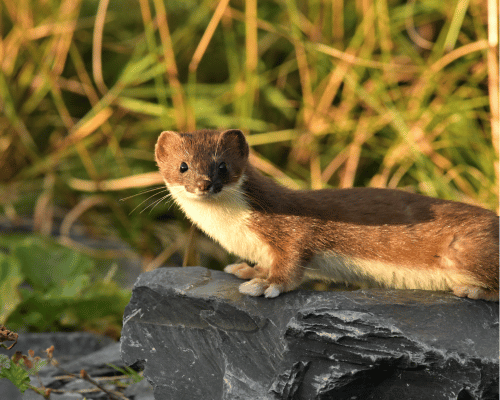Ermine… Small Weasel or Veracious Predator?

Ermine are one of the smallest members of the weasel family, averaging between 8″ and 12″ in length. However, their physical size and weight (less than 1 pound) should not be mistaken for their ability to take down their prey. They are carnivores and can take down a full grown rabbit!
They are native to the northern climate, here in North America and Europe. We see them infrequently in Jackson Hole, Wyoming – because they blend in with the landscape. This critter’s fur is light brown and white in summer; and ALL white in winter… except for the tail, which is black-tipped all year.
An interesting fact: During the reign of Edward III (1327–77) of England, the wearing of ermine was restricted to members of the royal family only. State robes were constructed in such a way that the rank and position of the wearer could be determined by the presence / absence / disposition of the black spots. (Now, artificial fur is used in the UK.)



4 Interesting Facts About Ermine
It’s believed that the species originated in Armenia.
Ermine, scientifically known as Mustela erminea, are a species of mustelid that exhibits a complex dichotomy in its ecological role. While often characterized as small and unassuming weasels, these creatures embody a predatory prowess that defies their diminutive stature. The ermine’s sleek, elongated body, adapted to its environment in the Northern Hemisphere, allows it to pursue prey with agility and stealth.
Despite its size, which ranges from 6 to 13 inches in length, the ermine is a voracious predator, subsisting on a diet comprised largely of small mammals such as rodents. Their hunting capabilities are augmented by sharp teeth, keen senses, and a high metabolism that necessitates constant foraging.
Consequently, labeling the ermine merely as a small weasel would be a significant underestimation; it is, in fact, a highly specialized and efficient predator, integral to its ecosystem’s balance.




